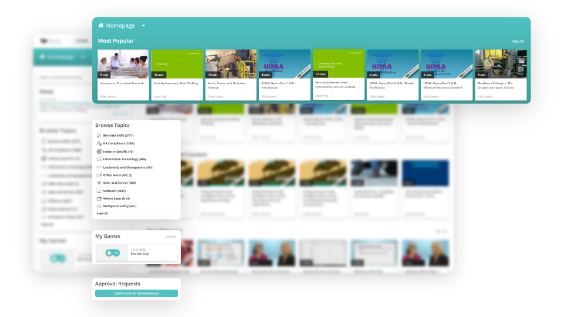PERFORMANCE APPRAISAL TRAINING
FOR YOUR ORGANIZATION
FOR YOUR ORGANIZATION
The Purpose of Performance Appraisals
For most workplaces, performance reviews are used to establish and support skills training and career development, along with rate of pay, promotions, and workforce management.Performance appraisals essentially have three functions:
- To provide feedback on individual performance
- To be a starting point for changing workplace behaviors
- To provide data to managers for future skill assessments and assignments
What employees are looking for in an appraisal is useful feedback. They want to understand how they can improve and earn higher ratings.
Performance Appraisal Methods
By choosing the right performance review method for your organization, you can make the whole experience effective and rewarding.360-Degree Feedback
This appraisal method evaluates employees by using feedback from managers, peers, customers, the employee themselves, and any direct reports they may have. Through this type of appraisal, employees gain awareness of how they are performing and the impact they are having. It’s a great kick off point for starting self-development or a coaching, mentoring, or other career development activity.
Management by Objectives
This method is when the manager and employee work together to identify, plan, and communicate about objectives to be completed during a specific period (quarterly, yearly, etc.). These tend to be more tangible goals rather than gaining proficiency in soft skills. There are usually intermittent check-ins to measure achieving those set objectives that tie into the organization’s overall objectives. Success is measured by meeting those objectives in the period allotted.
Ranked
This is perhaps the oldest system of appraising work/worth. It simply ranks all the employees on a team, in a group, or in the company from highest to lowest in order of performance. Essentially each employee is compared with every other employee on one trait. The downside is that measuring the differences between employees is difficult, and some employees might excel in an area that is a challenge area for another
Forced Distribution
The ratings of employees fall along a bell curve. Managers and supervisor allocate a percentage of the ratings within the group to each performance level on the scale. However, the actual distribution may not fall in the shape of a bell, forcing leaders to push some employees to either side that would actually fall within the middle.
Graphic Rating Scales
Perhaps the most used type of performance appraisal, graphic ratings list several factors (attendance, quality of work, etc.) that a supervisor rates an employee on. The rating usually falls in a scale such as unsatisfactory, fair, good, great, and allows the rater to determine performance of an employee along a scale.
Behavior Ratings
Behaviorally-anchored rating scales focus on employee behavior rather than specific characteristics. Specific behaviors represent degrees of performance and are used as reference points. This type of appraisal is expensive because it’s based on extensive analysis and the collection of data for each role at a company.
Setting Strong Goals for Employees
Goal setting is a vital part of the appraisal process. They’re the criteria that an employee will be evaluated against, and they usually align with the overall organizational and team-specific goals.Common types of goals include:
- Job specific – These are based on pre-established job duties that are laid out in the job description. They should be met continuously until the job description or job role changes.
- Project – These goals are often set on a project basis, and last the duration of the project.
- Stretch – These types of goals are generally a little harder to achieve and are usually used to expand the knowledge, skills, and abilities of high-potential employees.
Specific goals should answer the 5 “W” questions – who, what, where, which, and why – so that employees don’t lose focus or motivation.
Measurable goals help track the progress of an employee in meeting the goal and helps the employee stay focused to meet deadlines and remain excited about achieving the goal.
Achievable goals are realistic and attainable because they need to be met and are not stretch goals.
Relevant goals align with other goals within in the organization and help drive employees forward in their jobs.
Time-bound goals give a deadline to focus on and something to work toward.
Preview Videos from The BizLibrary Collection
Performance Appraisals (Part 7 of 8): Conducting the Appraisal

A New Supervisor’s First Performance Development Conversation

9-Box Grid Assessment: Rating Performance and Potential

How to Deliver Feedback
Whatever method of appraisal is chosen, at some point, feedback will need to be delivered to employees.
The number one consideration is that feedback needs to be actionable. What is the employee going to do differently because of this appraisal? Mangers need to ask employees at the end of the discussion.
Managers need to focus on one thing at a time and avoid statements such as “Work was performed on-time and to standards.” Since they are proving someone with a rating, the rating needs to apply to each characteristic individually.
Appraisals should be written with clarity in mind by being simple and direct and using words everyone knows and understands. This helps keep the conversations focused without running on about a particular topic.
Provide objective feedback. Simply saying, “It could have been better,” doesn’t deliver anything concrete to the employee. Mangers should provide evidence for comments by including performance data, addressing process breakdowns, or pinpointing behaviors.
And don’t forget to frame things positively as well. Appraisals are not a time to dump all the negatives on an employee. It’s a time to celebrate achievements and talk through growth plans.
How Online Training for Conducting Performance Appraisals Can Help
Knowing which appraisal method is best for your organization or team and setting clear and attainable goals are important when establishing an evaluation plan for the employees within your company.
BizLibrary curates a large and diverse video training library with numerous courses focused on employee appraisals and development.

Explore more
of our leadership
skills topics.
Online training is quickly becoming the best way to teach employees skills they need to do their jobs. Numerous studies have shown that online training is often more effective, and learners retain more information than with classroom training alone.
Our micro video format breaks content up into smaller, more manageable chunks, making it easier for employees to learn and apply this knowledge when they need it. These online courses can be viewed on an individual basis – where an employee learns by themselves at work or at home – or as part of a group training environment or discussion.
Help your organization have motivating and effective performance reviews by utilizing modern, engaging training content in an easy-to-use platform. Talk with an expert to learn how our online learning solutions can transform training in your organization.
